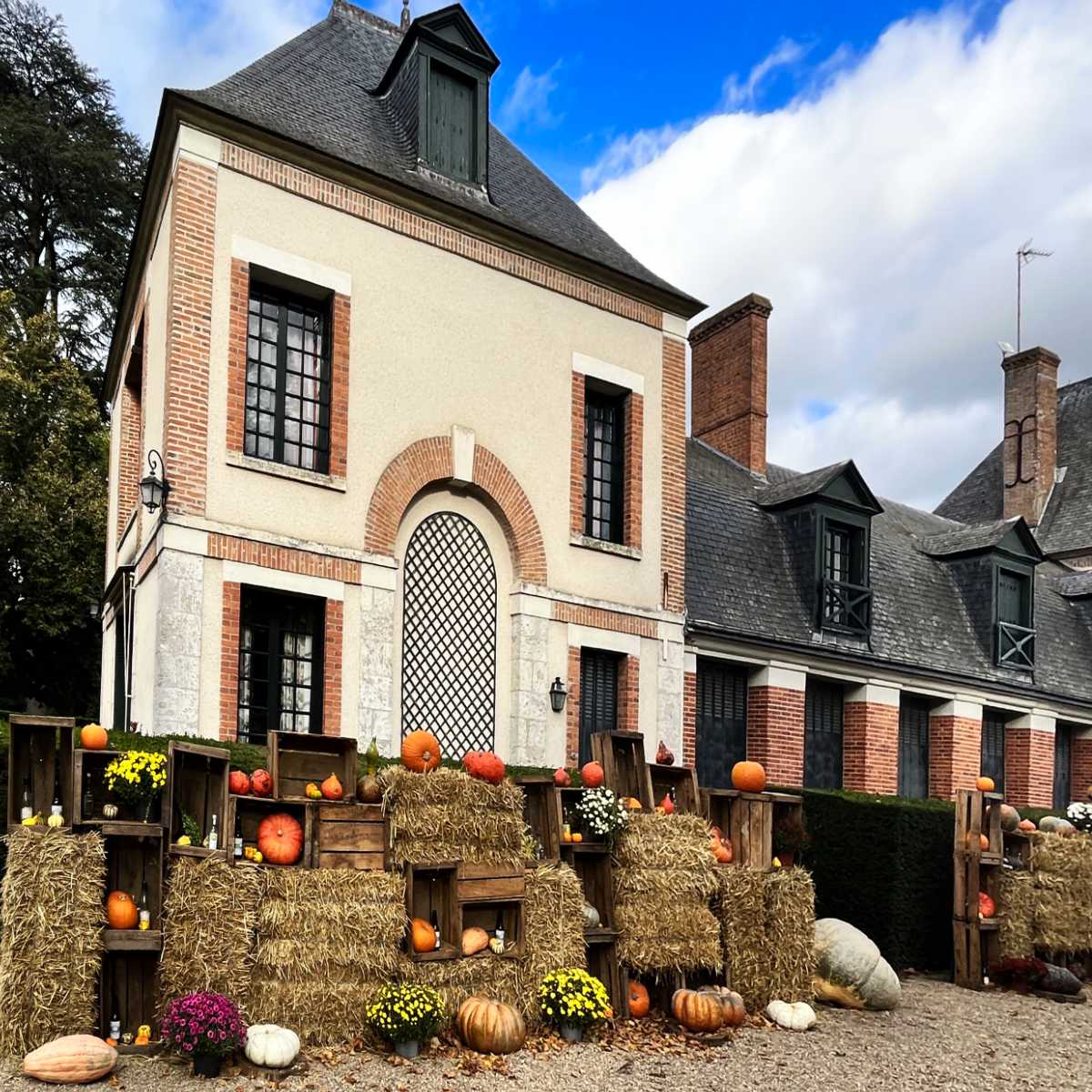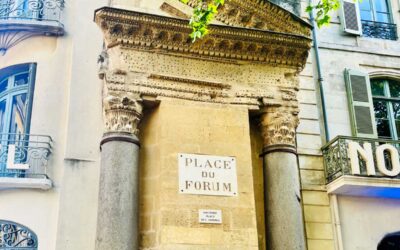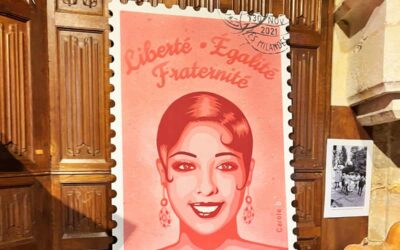I should state right off the bat that people don’t really celebrate Halloween in France. The French simply don’t register it on their calendar radar, the way we do in North America.
That would be way too commercial and quite “unFrench”. That being said, a little dive into French history shows that the origins of Halloween are a lot closer to old-world France than you might expect.
The History
i) Celtic origins
Halloween actually isn’t a “new” American tradition, but a very old one. It comes from the Celtic Pagan celebration of Samhain in Ireland, Scotland, Wales, and wait for it, France. The Celtic Gaul tribes were spread out across Western Europe and the British isles from before the days of the Roman Empire.
The region of Brittany still vaunts their Celtic heritage today, with their language Breton and a black and white flag that is called the Gwenn-ha-Du.
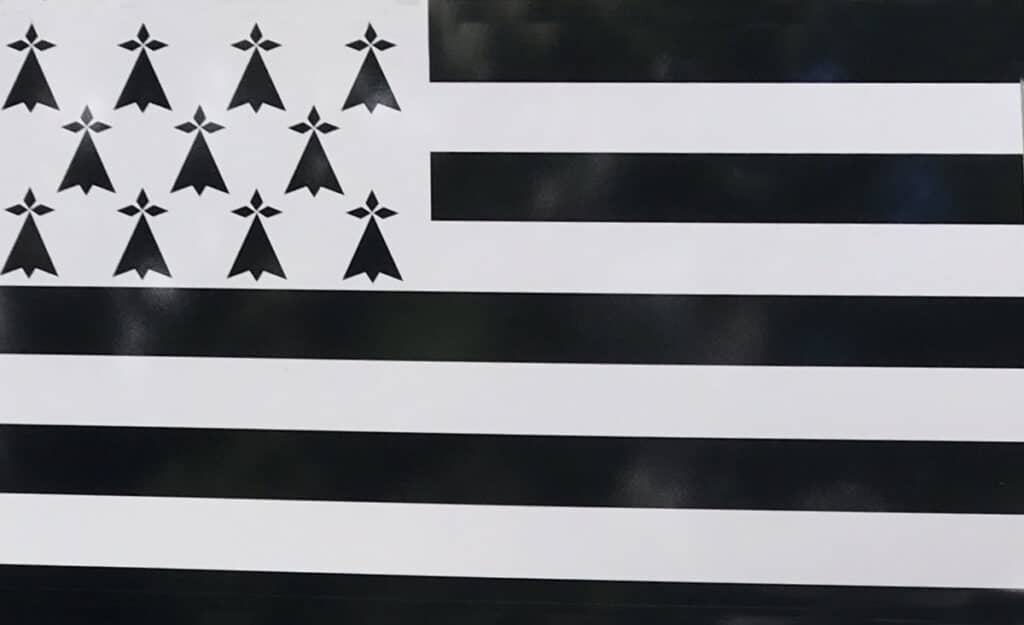
Etymologically Samhain is constructed from ” sam ” for ” summer, the season ” and ” haf ” for ” end ” in Breton. Halloween and Samhain mark with the Celts, the beginning of winter, and is the true Celtic New Year.
The Samonios in Gaul, the old name of France, along with the other tribes in the Anglo-Celtic Isles, believed that the dead and spirits of the underworld could walk among us.
For 7 days they would celebrate and rub shoulders with the dead, with the Druids conducting of the festivities. (Just imagine Asterix and Obelix celebrating with Getafix officiating.) It was also the start of the Celtic New Year.
The belief was that on October 31st, All Hallows Eve (which became Halloween), the Celts celebrated the ghosts of the dead returning to earth. Then on the night before the New Year (November 1 or All Saints’ Day), the worlds of the living and the dead mingled.
ii) Catholicism
Since it was such an important holiday for the Celts, the Romans could not just get rid of it. In the 9th century, the Roman Catholic Church converted Samhain into a Christian holiday, in an effort to convert the Celts to Catholicism.
Halloween became the evening before the Christian holy days of All Hallows’ Day (also known as All Saints’ or Le Toussaint in French) on 1 November and All Souls’ Day on 2 November.

iii) Jack-o-lantern
The old Irish tale of Jack-o-lantern then took over. As the tale goes, the devil appears to old drunkard Jack, while he was in a tavern, and claims his soul. Jack asks the devil to offer him a drink, a last drink before leaving for hell. The devil accepts and turns into a sixpence coin. Jack grabs it and immediately puts it in his purse.
When Jack dies, entry to heaven is denied, but Jack convinces the devil to give him a piece of hot coal to light his way in the dark. He places the coal in a turnip dug as a lantern and is condemned to wander aimlessly, until the day of the last judgment. He reappears every year, on the day of his death, on Halloween, carrying a light in a hollowed-out turnip.
iv) Immigration to the New World
As impoverished Irish farmers moved to the New World in the 1800s and 1900s due to famines and wars, they took their tales with them.
All Hallow’s Eve became halloween, and the holiday became more and more popular in the United States and Canada, and became a commercial occasion without the religious connotations. With an addendum: since a turnip is quite difficult to carve, the tradition eventually changed to a pumpkin.
v) Traditions in France
As recently as the early 1900s, the children in Brittany were still sculpting heads in beets and turnips and playing tricks with other villagers, according to Pierre-Jakez Hélias in his book Le Cheval d’orgueil.
These days, several cities in France celebrate the Fête des Sorcières, festival of witches towards the end of October. If you are interested in attending, the biggest ones are in:
- Lille (Haut de France)
- Chalindrey (Grand Est)
- Morbecque (Haut de France)
- Pennes Mirabeau (Provence)
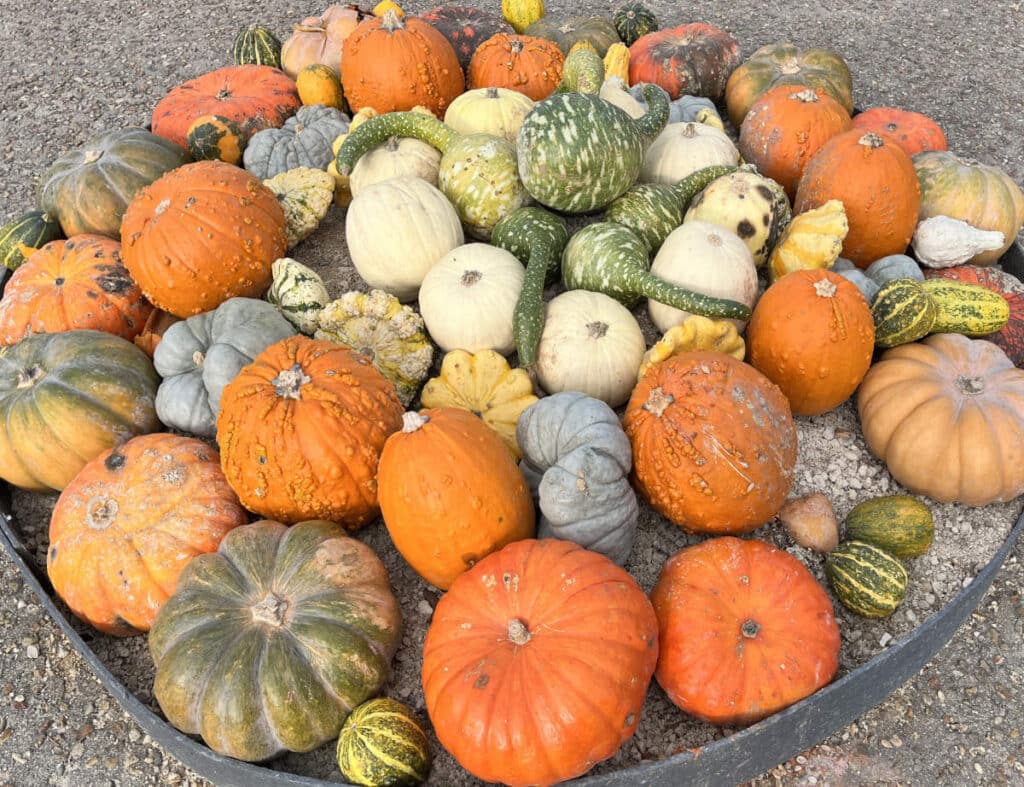
The French Way of Celebrating Halloween
So with the Gaulish connection and Halloween having originated here (at least partially), you might think that Halloween is widely celebrated in France. It isn’t. You are more likely to find that in most neighborhoods in France it is a bit of a snooze.
1. How to say trick-or-treat in French?
It isn’t really clear how to say “trick-or-treat” in French. A couple of alternatives are:
- “des bonbons ou un sort” – Candies or a spell?
- “bêtises ou friandises” – Mischief or sweets?
2. Kids don’t go trick-or-treating
The reason it isn’t clear how to say “trick or treat” is because you will not see kids going door-to-door. And even if they did, there would likely be no candy. French neighbors don’t stock up on candy on Oct 31st.
I know lots of expat moms who go and drop off little bags of candy at their neighbors to subsequently hand out. (I am not well-prepared enough to do this, but I have been considering it!)
3. Boring Costumes
Even if the kids (or adults) do get dressed up, you are not going to see any amazing costumes here. Rather than fancy cosplay type outfits, you are more likely to see boring old witches, princesses, and speeederman (spiderman).
Costumes are not usually very scary either. It is more the usual run-of-the-mill boring stuff that maman and papa can put together easily.
Since those French parents didn’t grow up dressing up themselves, the creativity when it comes to costumes is a bit lacking.
4. No carving pumpkins or turnips
Unlike North America, you are not going to find truckloads of pumpkins or turnips at local grocery stores around Oct 31st.
And since there are no pumpkins that you have to carve out, there are no pumpkin pies either or pumpkin spiced latté at Starbucks in France either.
5. Expat parties
The only place you might find very enthusiastic Halloween celebrations are the Halloween parties that are organized by expat anglophone adults.
If you visit the Marais or the 5th arrondissement in Paris on the 31st of October, you will probably cross quite a few pub crawls of drunken foreigners all dressed up, but that is mostly it.
6. Jumping on the bandwagon
But don’t despair, there are more companies in France starting to hop on the Halloween bandwagon. If you go to Disneyland Paris or Parc Asterix, you will definitely see more Halloween festivities.
Some schools are starting to get in on the action as well, asking kids to come all dressed up for the day. However, Halloween usually falls during the October school holidays, so most years the school is closed.

The Day after Halloween
While Halloween may not be celebrated on October 31, All Saints Day on November 1 is recognized in France. Although France today is a secular country and All Saints (known as “Toussaint”) is a Catholic occasion, old habits die hard.
It was Napoleon Bonaparte in 1802, who decided to establish these religious days as national holidays, one for each season:
- Ascension in spring (May)
- Assumption in summer (August)
- All Saints in autumn (November)
- Christmas in December.
Known as Toussaint in French, November 1st is a public holiday where all schools, government office, and businesses are closed.
For those who are religious, it is an occasion to remember the dead. Chrysanthemums are laid on gravestones of the dearly departed. (For the superstitious, these flowers are never offered to the living.) Over €170million in flowers is spent in France each year at Toussaint.
I suppose this is a lucky thing for those Halloween revelers in France: a day to relax and sleep in after chocolate (and alcohol) overload!

If you enjoyed this article, you may wish to read about other celebrations where the French do enjoy it up. Epiphany, anyone? A bientôt!
